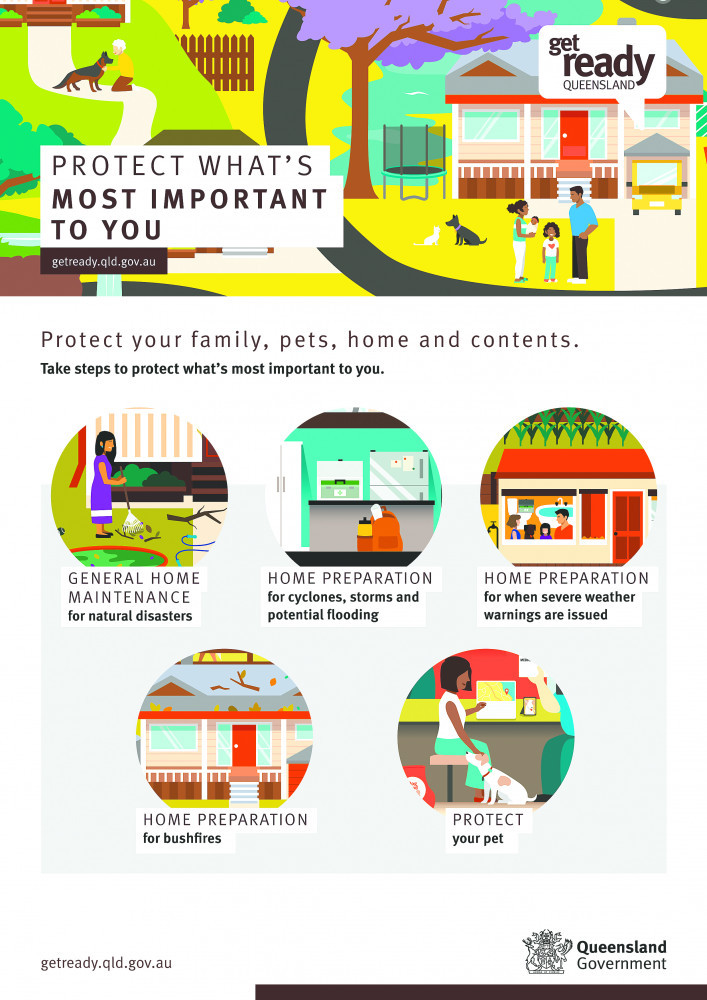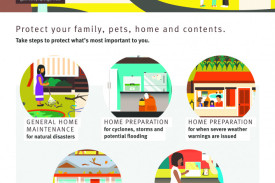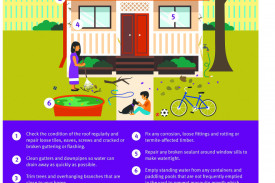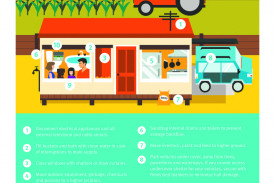Community
15 October, 2021
Get ready – Above average cyclone season tipped
THE forecast for the coming cyclone and storm season is not good news for residents in the Far North.

The Bureau of Metrology has predicted greater than average cyclone activity, with increased rainfall and the potential for widespread flooding.
Each year, approximately 11 cyclones enter Australian waters with four expected in Queensland and at least one to cross the coast. This year the Bureau has predicted a 65 per cent chance of an above average number of cyclones and lows in Australian waters.
Residents are urged to commence with their cyclone and storm preparation and Get Ready for the coming season.
Get Ready Queensland Week, October 10 – 16 is a time to commence preparing for what Mother Nature will throw our way this year.
Get Ready Queensland Ambassador Johnathan Thurston said Queenslanders can get ready in three simple steps.
“All we need to do is prepare an emergency plan, pack an emergency kit and make sure our insurance is up to date,” Mr Thurston said.
“By taking these simple steps now we can make sure we protect what’s most important to us.
“If everyone can take some time to be prepared for disaster season, it means that our emergency services can focus on the people who really need help in a disaster.
“The only predictable thing about Queensland’s weather is its unpredictability so let’s not leave anything to chance this summer,” he said.
Across our regions local councils are stepping up their preparation for the coming season. Cassowary Coast residents know only too well the devastating impact of cyclones, having survived the fury of Cyclones Larry and Yasi.
Cassowary Coast Regional Council Mayor, Mark Nolan is urging the community to complete three simple steps to prepare and protect your household:

Step One:
The best way to ensure everyone knows what to do and where to go in an emergency is by keeping a Household Emergency Plan. Sit down with your family and make a list of important contacts like family and friends who live out of town, doctors, insurance providers, utility providers, emergency meeting places, and details on where you would stay if you needed to evacuate quickly. You can build your emergency plan through the Get Ready Queensland website here:
https://www.getready.qld.gov.au/plan
Step Two:
Keep a waterproof kit full of emergency supplies you’d need to last at least five days at home if you were isolated due to flooding. Include plenty of non-perishable food and water; a torch; battery powered radio, toiletries including tissues and hand sanitiser; face masks; disinfectant wipes; spare batteries, gas cooker, medication, cash (eftpos may not work in power failures) and board games to help pass the time. For the full list of items to pack in your emergency kit visit
www.getready.qld.gov.au/get-prepared/3-steps-get-ready/step-3-pack-emergency-kit
Step Three:
Both renters and homeowners should ensure they have appropriate coverage for disasters and be familiar with their coverage details. Make sure your home and contents and all other insurance cover (like boat or caravan) is up-to-date and provides adequate cover for your unique needs. Call your insurer if you have any questions about your policy.
All local councils in the north have a Disaster Dashboard online. The Disaster Dashboard draws all the essential web feeds into one site allowing residents to access the very latest information from the Bureau of
Metrology, Ergon, Main Roads and essential weather and disaster warning.
You can find your local Disaster Dashboard by Googling your local government area plus Disaster Dashboard.





